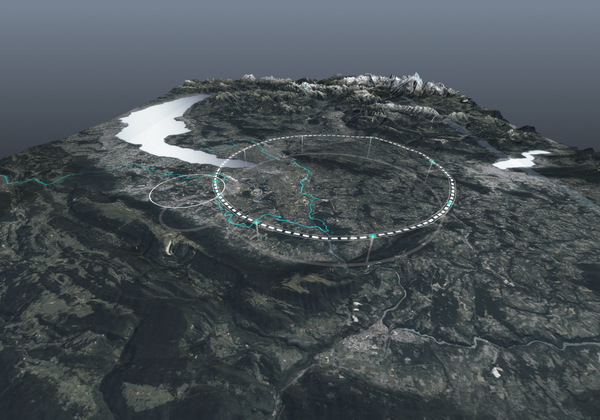February 7, 2024
4 min read
A feasibility study on CERN’s Future Circular Collider identifies where and how the machine could be built—but its construction is far from assured
The proposed Future Circular Collider, or FCC (large circle, dashed outline), would be built close to its predecessor at CERN, the Large Hadron Collider (small circle).
Europe is pushing forwards with plans to build a 91-kilometre-long, 15-billion-swiss-franc (US$17-billion) supercollider underneath the French and Swiss countryside. The machine would allow researchers to study the Higgs boson in detail. But scientists are under pressure to convince funders that such an enormous investment is worth it, following the lack of new physics revealed by the Large Hadron Collider (LHC).
Details of CERN’s plan emerged from a mid-term report studying the feasibility of the Future Circular Collider (FCC), which would dwarf its predecessor, the 27-kilometre LHC at CERN, Europe’s particle-physics laboratory near Geneva, Switzerland.
The first phase of the study — which focused on identifying where and how such a machine could be built in the CERN region — revealed “no technical or scientific showstoppers” that would prevent its construction, said Eliezer Rabinovici, president of the CERN Council, the organization’s governing body, at a press briefing on 5 February.
On supporting science journalism
If you’re enjoying this article, consider supporting our award-winning journalism by subscribing. By purchasing a subscription you are helping to ensure the future of impactful stories about the discoveries and ideas shaping our world today.
Construction of the machine, which will require boring a circular tunnel around 200 metres underground, could begin as early as 2033. The 91-kilometre-long tunnel, which the design suggests should be interrupted by four experimental halls, would encircle an area bigger than Chicago in Illinois. The…
Read the full article here







